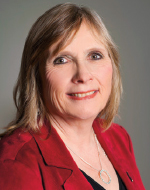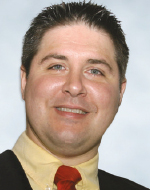Page Content
CANADIAN PRESS IMAGES/JASON FRANSON
Education sector braces for budget cuts
Budget cutbacks will be felt in Alberta classrooms.
That’s the message being delivered by three education observers as the Prentice government moves toward a nine per cent overall cut to program spending.
 “I think it’s going to be very, very tough to staff our schools adequately,” said Helen Clease, president of the Alberta School Boards’ Association.
“I think it’s going to be very, very tough to staff our schools adequately,” said Helen Clease, president of the Alberta School Boards’ Association.
On Feb. 11, when discussing the upcoming spring budget, Finance Minister Robin Campbell said the government will cut its overall spending by about five per cent and will also hold back an increase of roughly four per cent that was to account for population growth and inflation.
 It’s not yet known what type of cuts could be coming to education, but even holding the line would put school boards behind, due to the rise in the cost of living, Clease said. And any further cuts will impact class sizes, workloads and the ability of schools and teachers to meet students’ individual needs.
It’s not yet known what type of cuts could be coming to education, but even holding the line would put school boards behind, due to the rise in the cost of living, Clease said. And any further cuts will impact class sizes, workloads and the ability of schools and teachers to meet students’ individual needs.
“We are very much going to be doing more with less,” she said.
School boards across the province are now looking at scenarios in anticipation of the budget. Options under consideration include cuts to teacher numbers and hiring freezes, Clease said.
In a statement cited by Sun Media, Education Minister Gordon Dirks said the government will maintain programs “in a fiscally prudent manner.”
“Throughout the budget process, I have been advocating strongly for the importance of education in the province. That said, boards are going to need to look for efficiencies and savings and possible reprioritization, and the Ministry of Education is going to be doing the same,” he said.
Premier Jim Prentice has said the government knows core services like education and health care need to be maintained but that everyone is going to have to do more with less.
Initial projections completed internally by the ATA suggest that next school year could see an influx of 19,000 students, but a five per cent cut to school boards would likely result in a reduction of 2,500 teachers. A five per cent cut would mean that school boards would be more than half a billion dollars short of the funding they'd need to maintain current classroom conditions. If these projections hold, the number of students would rise to 640,000, which is 90,000 more than in 2008–09, when class sizes were at their lowest. But the projected number of teachers (33,600) would be 1,200 fewer than in 2008–09. This translates into the potential reduction of four full-time teaching positions over the next seven years at a typical 400-student school.
 Kent Hehr, education critic for the Alberta Liberals, said the public education system has already been gutted since 2008.
Kent Hehr, education critic for the Alberta Liberals, said the public education system has already been gutted since 2008.
“Education is on a very difficult road and a further nine per cent would simply be devastating to the system.”
Deron Bilous, a teacher turned MLA who is the NDP’s education critic, said he’s very concerned about the upcoming budget.
 “I’m extremely concerned with the effect that it’s going to have on kids, on teachers — on their stress, on teacher burnout rates or trying to attract young people to the profession. They’re constantly being asked to do more with less. We’re reaching a breaking point.”
“I’m extremely concerned with the effect that it’s going to have on kids, on teachers — on their stress, on teacher burnout rates or trying to attract young people to the profession. They’re constantly being asked to do more with less. We’re reaching a breaking point.”
Delays in the construction of new schools is another noticeable effect that’s already started, he said.
“Already we’ve been seeing and hearing about delays in projects,” he said. “We still have schools that were promised under Stelmach that are not built and open yet.”
Fiscal reform
Bilous, Hehr and Clease all said the province’s fiscal situation highlights the dangers of relying so heavily on natural resource revenues and that fiscal reform is in order.
“I think there are solutions out there. My frustration is that the PCs are very narrow-minded and have already taken a few things off the table that would generate billions of dollars and make up that shortfall,” Bilous said.
“The government has ample ways to do it, whether that would be various tax tools that are in the toolbox,” Hehr said.
On Feb. 18, Campbell said he’s considering the return of health-care premiums, which brought in about $1 billion annually before they were axed in 2009.
Clease said it’s time to buffer education from the vagaries of oil and gas fluctuations so that funding can be stable, predictable and sustainable.
“I would hate to see a group of children shortchanged because the price of oil dropped,” she said. ❚
